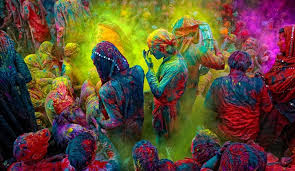Tejaji Fair is Coming on 25 Saptember 2012 and Large Celebration in Rajasthan India.
Rajasthan is a colorful and vibrant state in India. The tradition of Rajasthan is a unique blend of Royalty and colors. The fairs and festivals of Rajasthan are joyous and reflect the ascetic refinement. One of the most famous fairs is that of Tejaji in Bundi.
Veer Teja or Tejaji is a folk deity in Rajasthan. All the communities in the entire state of Rajasthan worship him.
He sacrificed his life to keep the family pride and values. Veer Teja is a great saint and there are a number of temples in entire Rajasthan. It is a belief that if a person is suffering from snakebite, he can be cured here. The person has to go to the Samadhi and tie a chord in Tejajis name. Tejaji is considered as a demigod with the powers to heal a person from snakebite. The person suffering ties an amulet in Tejajis name and is cured. The priests in the temple go in a trance and suck the poison from the wound. A thread is tied around the ankle or the wrist of the person. It is a belief that no one so treated dies of the bite.
A large fair takes place on the tenth lunar day of the Bhadrapad Shukla Paksha (Aug-Sep). This fair is held every year according to the Hindu calendar. It continues for five days and people all over the place come here to take bamboo for their village Tejaji Temple.
Veer Tejaji is known as the protector against snakes, scorpions & mosquitoes. It is said that during the 15 days of this fair these reptiles are not to be seen anywhere in the mela. People believe that Veer Tejaji protects them againts the bites of these parasitic reptiles. Tejaji is considered to be folk-deity and worshiped in entire Rajasthan, Uttar Pradesh, and Madhya Pradesh by all communities. Tejaji as a historical person was born on Bhadrapad Shukla Dashmi, dated 29 January 1074, in the family of Dhaulya gotra Jats. His father was Chaudhary Taharji (Thirraj), a chieftain of Kharnal inNagaur district in Rajasthan. His mother’s name was Sugna daughter of Dulan Sodhi of village Tyod (Kishangarh). Mother and father worshipped Shiva for birth of Tejaji, who took birth as a boon of Shiva. His aura was so strong that he was named Teja.
During the times of Tejaji the country was ruled by small republics which were in constant struggle with each other. Taharji, Tejaji’s father, was the Chieftain of Kharnal. There were conflicts betweenNagavanshis and Aryans. According to Hindu mythology, During Mahabharata period, Parīkśita the successor of Yudhisthira, was the ruler of Hastinapura. Parikshita was cursed by a sage’s son to die after snake bite. On hearing this, the king forswore the throne for his son Janamejaya and spent his last days listening to the discourses of Sage Sukadeva on Bhagwat. As prophecised, Snake king Takshaka bit Parikshita leading to his death. Infact Takshaka was a Nagavanshi King who killed Parikshita.
According to common belief Tejaji died due to snakebite on 28 august 1103. But the historical facts are that while Tejaji was returning fromPaner with his wife he was attacked jointly by Meenas, who were defeated earlier by the Nagavanshi chieftains. Tejaji and his wife fought bravely with sword. Tejaji was killed in the war and Pemal became sati at place called Sursura. Tejaji Muktidham Temple has been constructed at this site in Sursura.
Pemal sat on the pyre with Tejaji in her lap and asked Tejaji’s ghodi Lilan to go to Kharnal and give a message of death of Tejaji. Lilan left the body of Tejaji with Pemal and departed for Kharnal. It is common belief that Lilan stayed at the banks of Khariya talab of Parbatsar village for some time and went straight to Kharnal. The people of Kharnal could read from the face of Lilan that Tejaji was no more. Tejaji’s sister Rajal who was also known as Baghal became sati on the eastern johad near Kharnal village. A temple has been constructed on this site in the name of Rajal. This is a unique example of sister becoming sati on the death of his brother.
Lilan also died after this and its temple has been constructed on the bank of southern talab near Kharnal.

















.jpg)
